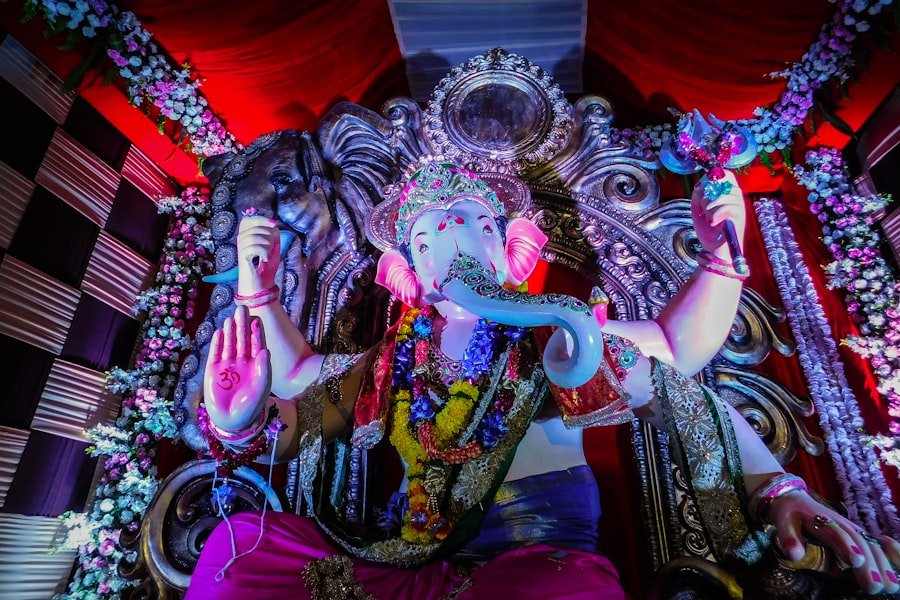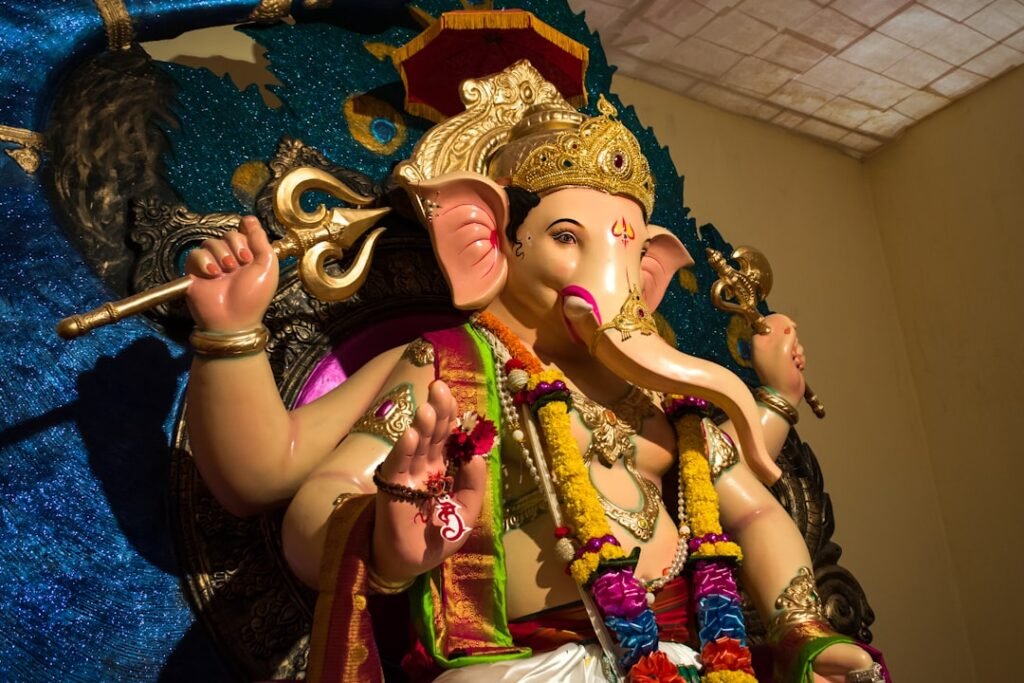Loki is one of the most fascinating and complex characters in Norse mythology. As the god of mischief and trickery, Loki plays a pivotal role in many of the myths and legends of the Norse pantheon. His cunning and deceitful nature make him both loved and feared by the gods and goddesses. In this article, we will explore Loki’s origin, his image and characteristics, his role in Norse mythology, his love story and marriage, his descendants and legacy, his representation in modern culture, his worship and belief, and his representation in art and literature.
Loki’s Origin and Background
Loki is the son of two giants, Laufey and Farbauti. He is also the blood brother of Odin, the Allfather. Loki’s family background is complex, as he is both a god and a giant. This dual nature is reflected in his personality and actions throughout Norse mythology.
Loki came to be known as a trickster god due to his mischievous nature. He was always causing trouble for the gods and goddesses, often using his wit and cunning to outsmart them. Loki’s ability to shape-shift also played a role in his reputation as a trickster. He could transform into different animals or objects, making it difficult for others to catch him or predict his next move.
Loki’s Image and Characteristics
Loki is often depicted as a handsome man with red hair and a mischievous smile. He has a charismatic presence that draws people to him, even when they know he cannot be trusted. Loki’s physical appearance reflects his dual nature as both a god and a giant.
In terms of personality traits, Loki is known for being cunning, deceitful, and unpredictable. He is a master of manipulation and enjoys causing chaos for his own amusement. However, Loki also has a softer side. He is capable of love and loyalty, as seen in his relationship with his wife Sigyn and their children.
Loki’s Role in Norse Mythology
Loki’s involvement in major Norse myths is extensive. He plays a central role in the creation of the world, as well as in the events leading up to Ragnarok, the end of the world. Loki is responsible for the death of Baldr, the beloved son of Odin and Frigg, which sets in motion a chain of events that leads to Ragnarok.
Loki’s actions often have far-reaching consequences for the other gods and goddesses. His mischief and deceit cause tension and conflict among the gods, leading to their downfall. Despite his destructive tendencies, Loki is also instrumental in helping the gods overcome challenges and obstacles.
Loki’s Charisma and Deceitfulness
Loki’s cunning and deceitful behavior are evident throughout Norse mythology. He is known for his ability to manipulate others and twist situations to his advantage. One example of Loki’s cunning is his role in obtaining Thor’s hammer, Mjolnir, from the giants. Loki uses his shape-shifting abilities to distract the giants and steal the hammer, ultimately saving Asgard from destruction.
Loki’s charm and wit make him a popular figure in Norse mythology. Despite his questionable actions, he is often seen as a sympathetic character due to his complex nature. Loki’s ability to outsmart others and his quick thinking make him an intriguing and captivating figure.
Loki’s Love Story and Marriage

Loki has several romantic relationships throughout Norse mythology. One of his most notable relationships is with Angrboda, a giantess with whom he has three children: Fenrir, Jormungandr, and Hel. These children play significant roles in Norse mythology, with Fenrir being a monstrous wolf destined to kill Odin during Ragnarok.
Loki is also married to Sigyn, a goddess known for her loyalty and devotion. They have two sons together, Narfi and Vali. However, their marriage is not without its challenges. Loki’s deceitful nature often causes problems in their relationship, and Sigyn must endure the pain and suffering caused by Loki’s actions.
Loki’s Descendants and Legacy
Loki’s children have a profound impact on Norse mythology. Fenrir, Jormungandr, and Hel are all key players in the events leading up to Ragnarok. Fenrir’s role as the wolf who kills Odin is particularly significant, as it represents the end of the world and the beginning of a new cycle.
Loki’s legacy continues to influence modern culture. His character has been adapted in various forms of media, including movies, TV shows, and literature. Loki’s complex nature and his ability to blur the lines between good and evil make him a compelling figure for storytellers.
Loki’s Image and Significance in Modern Culture
Loki is portrayed in various ways in modern culture. In Marvel comics and movies, he is depicted as a charismatic and mischievous villain who often clashes with his brother Thor. Tom Hiddleston’s portrayal of Loki in the Marvel Cinematic Universe has made the character even more popular and beloved by fans.
Loki’s significance in modern storytelling lies in his ability to challenge traditional notions of heroism and villainy. He represents the gray area between good and evil, blurring the lines between right and wrong. Loki’s character allows audiences to explore complex themes such as redemption, identity, and the nature of power.
Loki’s Worship and Belief
In Norse culture, Loki was not widely worshipped as a god. However, he was acknowledged as a powerful figure and was often invoked for protection against his mischief. Some modern pagan and Heathen religions include Loki in their pantheons and offer him worship.
Loki is viewed differently in modern pagan and Heathen religions. Some see him as a trickster deity who challenges the status quo and encourages personal growth and transformation. Others view him as a chaotic force that should be approached with caution. The diversity of beliefs surrounding Loki reflects his complex nature and the different interpretations of his character.
Loki’s Representation in Art and Literature
Loki has been depicted in art and literature throughout history. In Norse mythology, he is often portrayed as a handsome man with red hair and a mischievous smile. Artists have captured his dual nature by emphasizing his charm and deceitfulness.
In literature, Loki’s character has been explored in various ways. He is often portrayed as a complex and multi-dimensional figure, capable of both good and evil. Writers have used Loki’s character to explore themes of morality, identity, and the nature of power.
Loki’s importance in Norse mythology and modern culture cannot be overstated. As the god of mischief and trickery, Loki plays a central role in many of the myths and legends of the Norse pantheon. His cunning and deceitful nature make him both loved and feared by the gods and goddesses.
Loki’s legacy continues to influence modern culture, with his character being portrayed in movies, TV shows, and literature. His complex nature challenges traditional notions of heroism and villainy, allowing audiences to explore themes such as redemption, identity, and the nature of power.
In conclusion, Loki’s character is a fascinating and captivating figure in Norse mythology. His mischievous nature, cunning behavior, and complex relationships make him one of the most intriguing characters in Norse mythology. Whether loved or feared, Loki’s influence on Norse mythology and modern culture is undeniable.
在挪威语法律和秩序词汇中,有10个法律专业词。如果你对洛基的北欧神话感兴趣,你可能会对这个相关文章感兴趣。请点击这里阅读更多。此外,还有其他关于挪威语家居和生活用品以及健康和医疗词汇的文章可供参考。
FAQs
什么是北欧神话?
北欧神话是指古代北欧地区的神话和传说,包括诸如雷神托尔、奥丁、洛基等神祇的故事。
洛基是谁?
洛基是北欧神话中的一位神祇,他是一位形态可变的神,常常以欺骗和恶作剧的方式出现。
洛基有哪些故事?
洛基在北欧神话中有很多故事,其中包括他与雷神托尔的旅行、他帮助奥丁获得黄金苹果、他与女巨人的婚姻等。
洛基是好人还是坏人?
洛基在北欧神话中既有正面形象,也有负面形象。他既可以帮助神祇们解决问题,也可以制造麻烦和混乱。
洛基在现代文化中有哪些出现?
洛基在现代文化中经常出现在电影、电视剧、漫画等作品中,例如漫威电影宇宙中的《雷神》系列电影。


